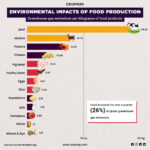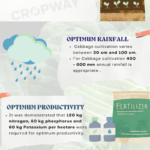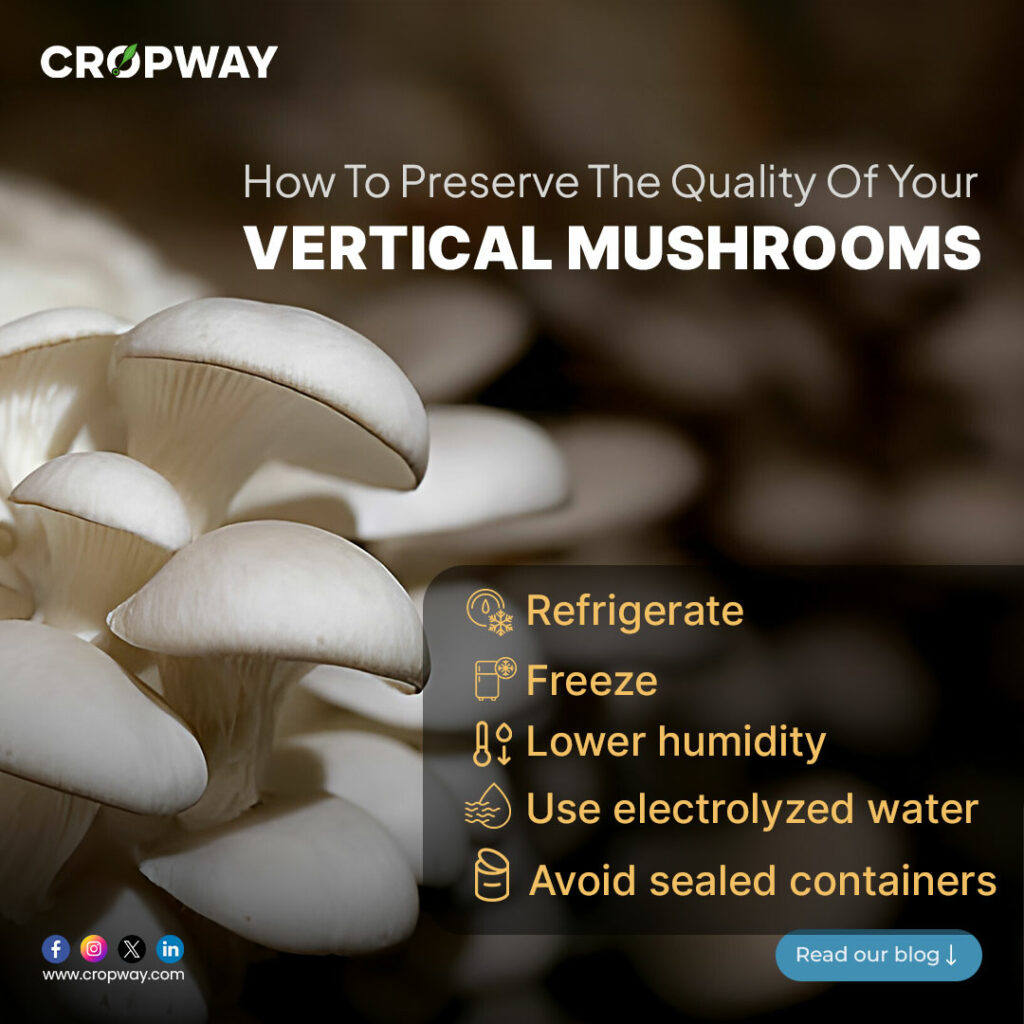
Introductrion
Mushroom cultivation, a complex yet rewarding process, transforms waste materials into highly nutritious and delicious food, bolstering both nutrition and economic well-being. Globally, approximately 200 mushroom species, celebrated for their unique aroma, texture, and taste, are enjoyed as delicacies. This sustainable practice plays a vital role in enhancing the overall quality of life for people.
While approximately 20 mushroom genera are commercially cultivated worldwide, India focuses on four types: white button mushroom (Agaricusbisporus), oyster mushroom (Pleurotus spp.), milky mushroom (Calocybeindica), and paddy straw mushroom (Volvariellavolvacea). Strikingly, the white button mushroom dominates Indian production, contributing 85%, surpassing its 31% global share. This underscores its pivotal role in India’s commercial mushroom cultivation landscape.
How To Preserve The Quality Of Your Vertical Mushrooms
To preserve the quality of your vertical mushrooms, start by selecting firm, fresh specimens without bruises or blemishes. Clean them gently with a damp cloth to remove any dirt. Avoid washing them excessively as mushrooms absorb water easily. Store them in a paper bag or a breathable container in the refrigerator to maintain freshness. Avoid sealing them in plastic, which can cause moisture buildup and spoilage. For longer-term preservation, consider drying or freezing them. To dry, slice them thinly and use a dehydrator or oven on low heat. To freeze, blanch them briefly, then freeze in a single layer on a baking sheet before transferring to a freezer-safe bag.
Understanding Vertical Mushroom Cultivation
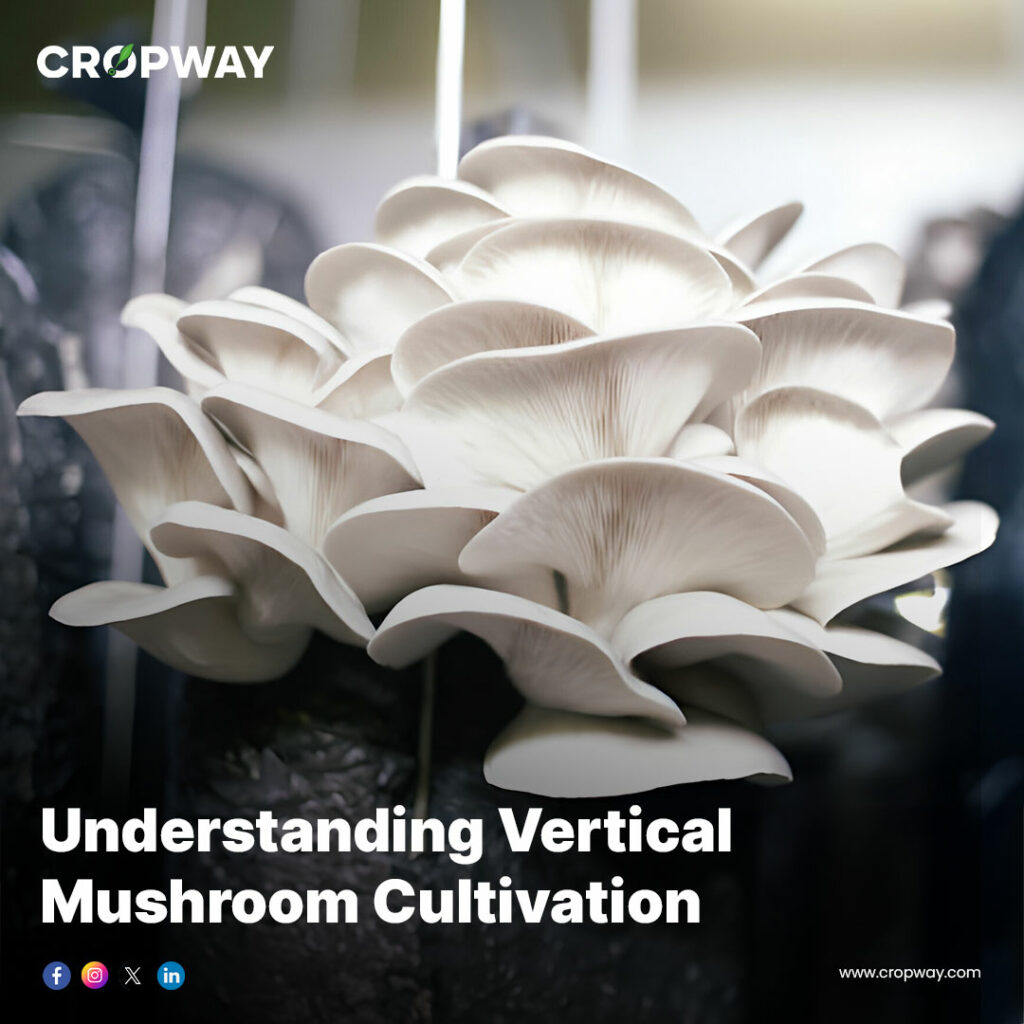
Vertical mushrooms, such as shiitake, oyster, and enoki, are known for their delicate texture and rich taste. Vertical mushroom cultivation involves growing mushrooms in stacked layers or columns, optimizing space and creating a visually striking display. This method is gaining popularity for its efficiency and reduced environmental impact. However, preserving the quality of mushrooms in a vertical setup requires careful attention to various factors, including humidity, airflow, and harvesting techniques.
Preserving Methods of Mushrooms
Despite the preference for fresh consumption, trading mushrooms exclusively in their fresh state proves impractical throughout the supply chain and year-round, prompting the need for alternative preservation methods. Mushroom postharvest care involves essential practices such as appropriate storage/packaging and minimal processing for short-term maintenance. Additionally, long-term preservation relies on diverse processing techniques to ensure the quality and longevity of fresh mushrooms.
- Short-Term Preservation
- Long-Term Preservation
Short-Term Preservation
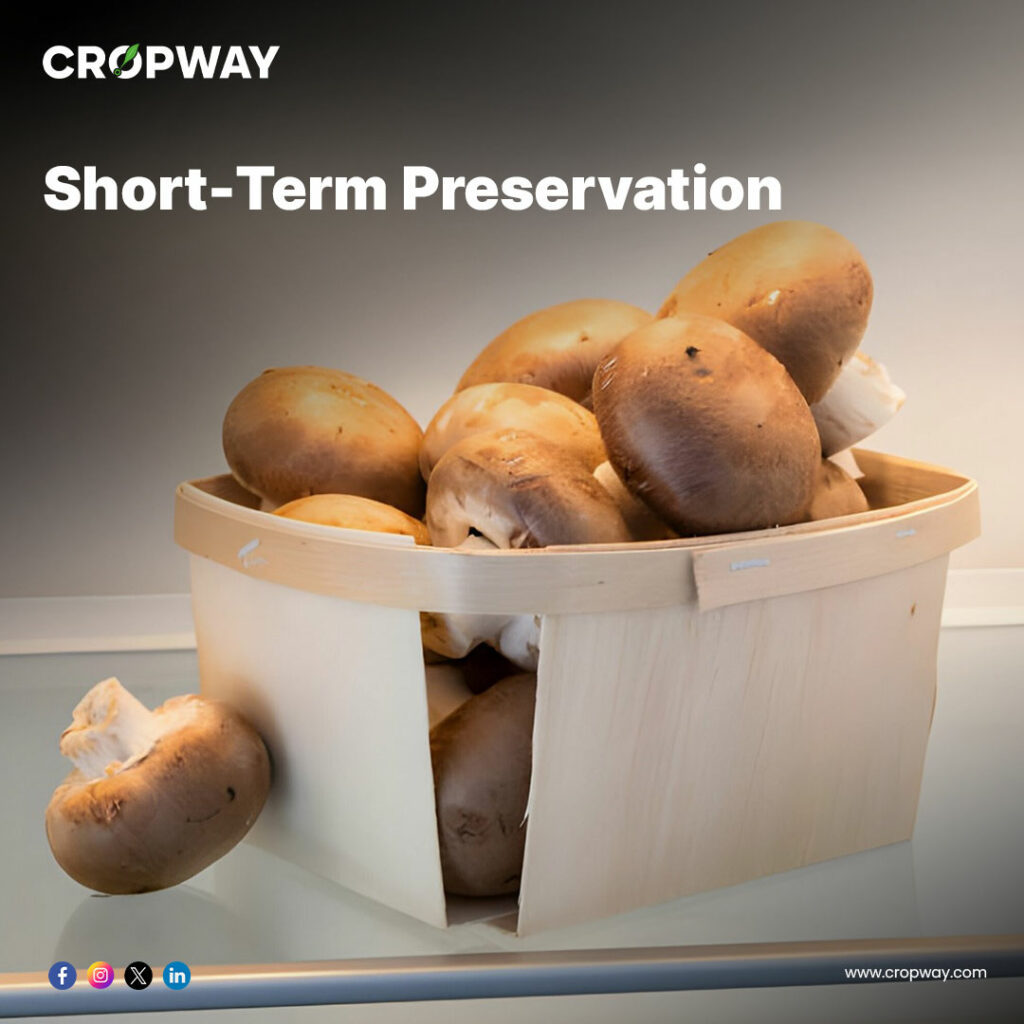
Cooling or Refrigeration:-Mushrooms stored at ambient temperatures (around 22°C) exhibit a brief shelf-life of 1–3 days. Implementing low temperatures proves effective in retarding microorganism growth, diminishing mushroom respiration rates, and preventing moisture loss, thereby extending their freshness. Lowering the storage temperature from 25 to 3 °C led to a 75% reduction in browning of mushrooms. Notably, the natural antioxidant L-ergothioneine decreased significantly after eight days of storage at 5 °C in both dark and fluorescent light conditions. However, the total phenols content increased significantly under fluorescent light during the 10-day refrigeration period, revealing temperature and light’s impact on mushroom quality.
Minimal Processing:-Minimal processing emerges as a contemporary method to naturally prolong the shelf-life of mushrooms, presenting a simpler alternative to traditional techniques like canning and drying. This approach, encompassing Modified Atmosphere Packaging (MAP), Controlled Atmosphere Packaging (CAP), washing, chemical treatment, blanching, radiation, use of moisture absorbers (e.g., sorbitol), and coatings, minimally affects the inherent characteristics of the produce.
Long-Term Preservation
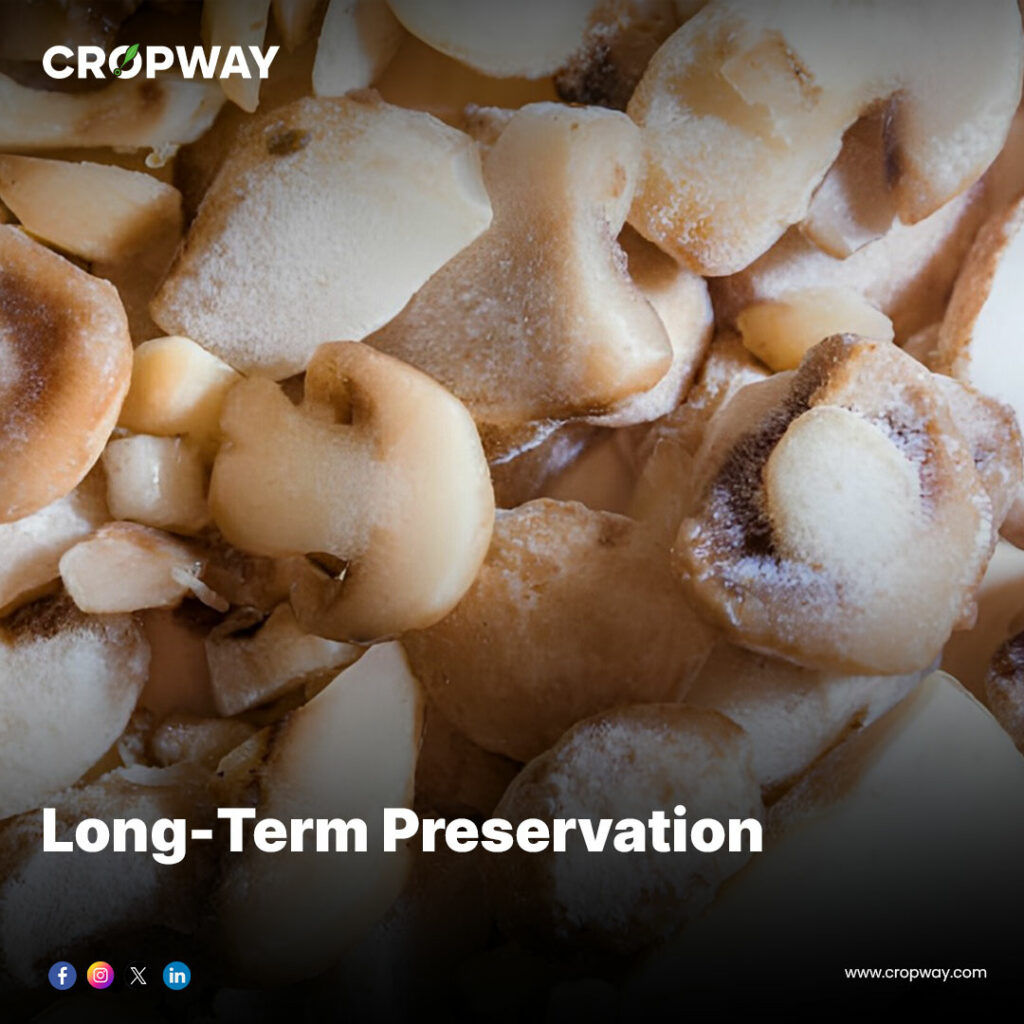
While primarily enjoyed fresh, mushrooms undergo global processing, involving freezing, canning, pickling, drying, etc. These methods transform their nature, extending shelf life and enabling international trade of processed mushrooms as a valuable commodity. This diversification facilitates the broader accessibility and distribution of mushrooms beyond their fresh state.
Freezing
Freezing is another effective technique to preserve the quality of your vertical mushrooms. Before freezing, blanch the mushrooms briefly to halt enzymatic activity and maintain their color and texture. The growing popularity of freezing as a mushroom preservation method ensures year-round availability, providing storage stability while maintaining high nutritional value and quality. The freezing process involves preparatory steps akin to canning, encompassing mushroom cleaning, washing, cutting, grading/sorting, and blanching to deliver a desirable product to consumers.
Blast freezing, the predominant technique in mushroom preservation, is often followed by the cryogenic method. Utilizing rapid cooling, blast freezers swiftly lower food temperatures from −25°C to −30°C, forming small ice crystals that cause minimal damage to mushroom cells, preserving their quality during the freezing process. After freezing, mushrooms can be transferred to a standard freezer for storage, provided it maintains the necessary freezing temperature. While frozen, mushrooms may undergo a subtle texture change, making them more suitable for cooked dishes rather than raw preparations, ensuring optimal utilization in various culinary applications.
Canning
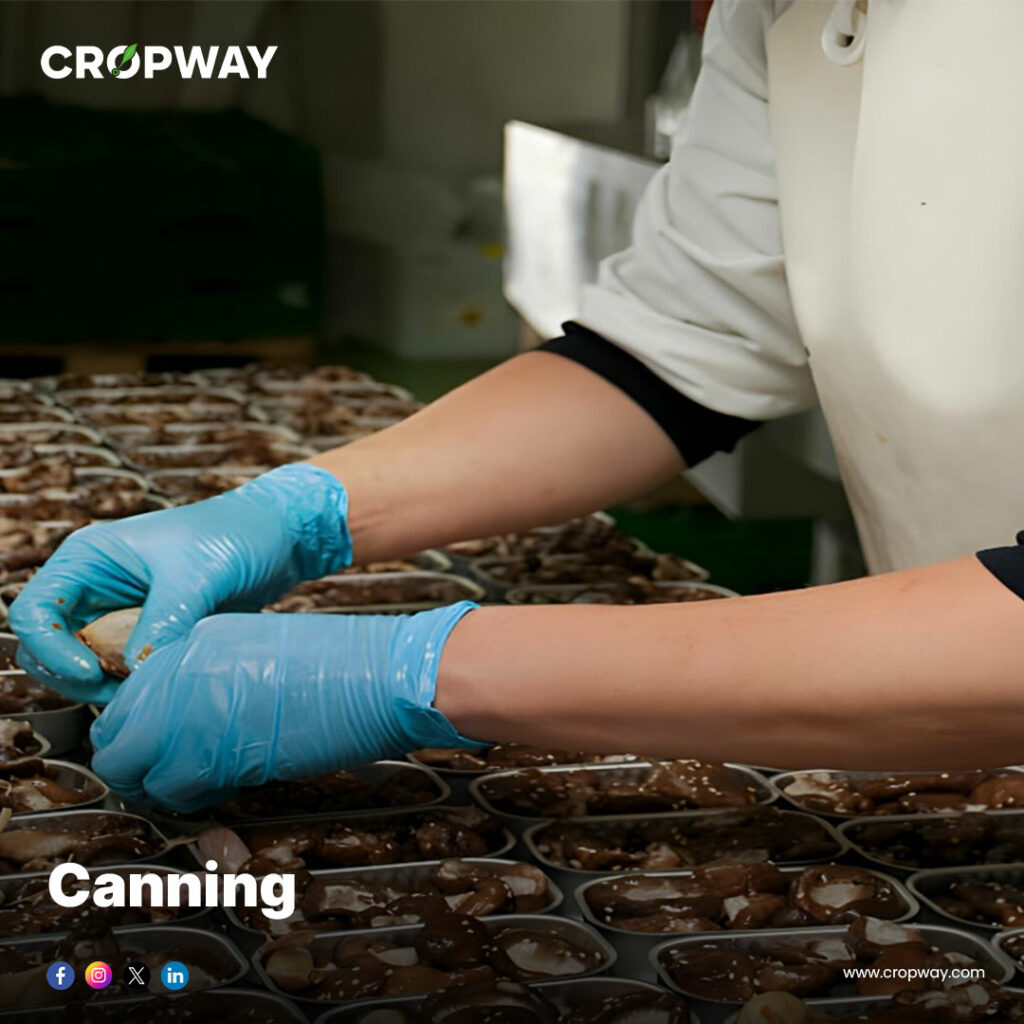
The canning process for mushrooms, emphasizing preservation and quality, involves sterilization. This method allows mushrooms to be stored for up to 2 years, offering a cost-effective storage solution. Initially, mushrooms undergo cleaning, washing, cutting, and sorting. Subsequently, they are blanched to maintain color, texture, and nutritional value.
To ensure top-notch canned mushrooms, immediate processing post-harvest or storage at 4°C–5°C is crucial. Prepared mushrooms are then packed into cans with the addition of a suitable liquid or brine. The cans are sealed aseptically to prevent contamination, maintaining the freshness and quality of the mushrooms throughout the canning process.
Drying
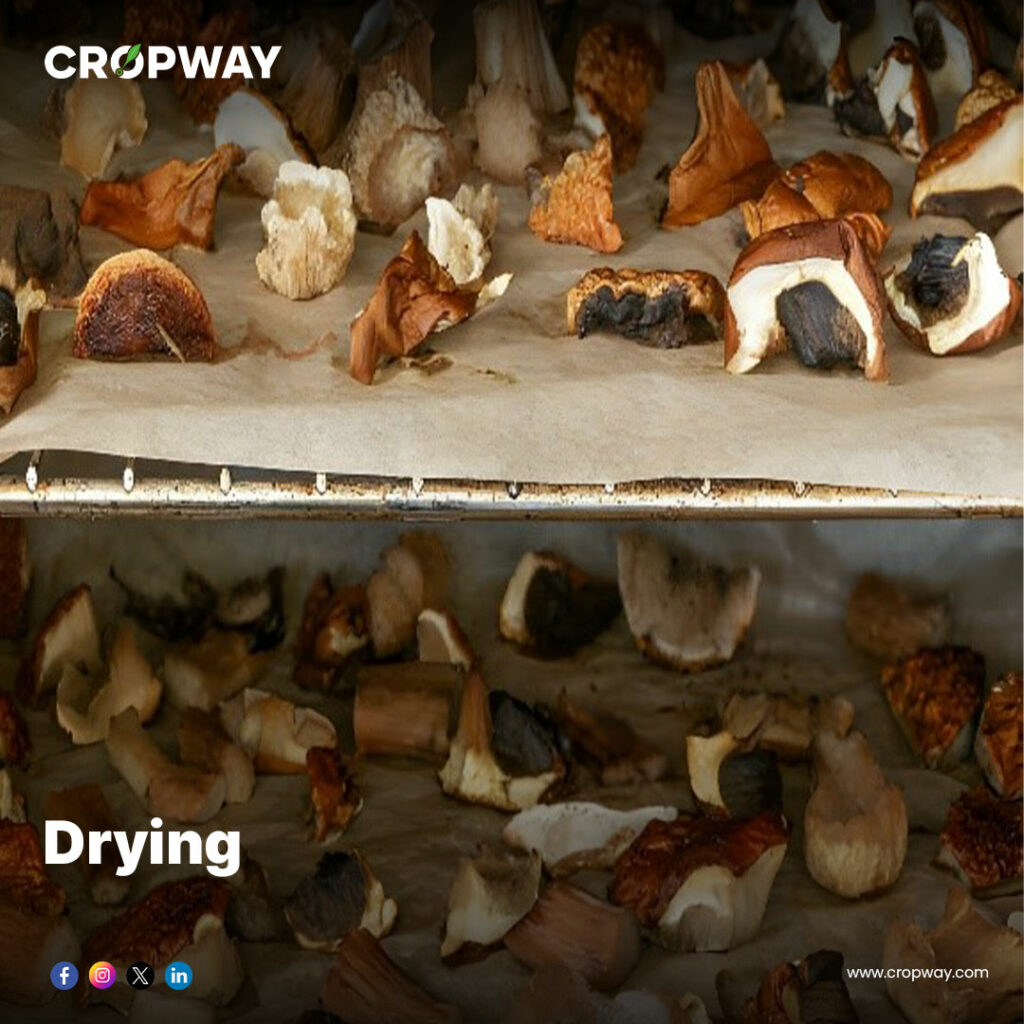
Drying stands as one of the oldest and crucial preservation methods for many mushrooms. It hinges on reducing the water activity of the product to a specific level, typically less than 10%, ensuring microbiological and physicochemical stability. This technique has endured over time, providing a reliable means to enhance the shelf life of various mushroom varieties. Initiate the mushroom drying process by cleaning and trimming, followed by slicing or leaving whole based on preference. Apply heat through sun drying, air drying, or specialized machines until moisture content significantly diminishes. The result should be properly dried mushrooms with a brittle texture, suitable for extended storage.
Various methods for drying mushrooms encompass conventional hot air drying, thin layer drying, vacuum drying, freeze-drying, microwave drying, and the recently introduced fluidized bed and microwave-vacuum drying. Crucial to the process are the final temperature and drying rate, influenced by factors like pretreatments, temperature, mushroom thickness, drying method, and moisture diffusivity. These techniques ensure optimal preservation, enhancing shelf life and maintaining the quality of the dried mushrooms. After drying, preserve mushrooms in airtight containers within a cool, dark environment. When needed, rehydrate the mushrooms by soaking them in water to restore their original texture and flavor. This ensures their versatility and maintains quality for various culinary applications.
Conclusion
Preserving the quality of your vertical mushrooms involves careful cultivation, timely harvesting, and optimal environmental conditions. Whether you choose drying, freezing, or pickling, understanding the sensitivity of these fungi is crucial. Factors such as humidity, airflow, temperature, and storage play a pivotal role in maintaining the impressive appearance, flavor, texture, and nutritional benefits of your vertically grown mushrooms. By paying attention to these elements, you ensure that your mushrooms not only look impressive but also contribute to peak culinary experiences.
You might also want to read:- How profitable is mushroom farming in India? Growing mushrooms!






